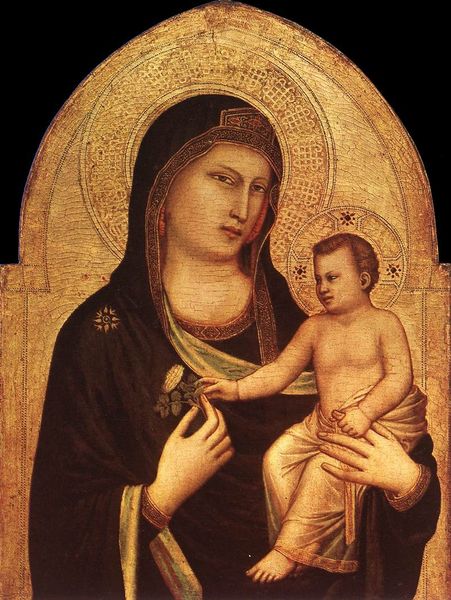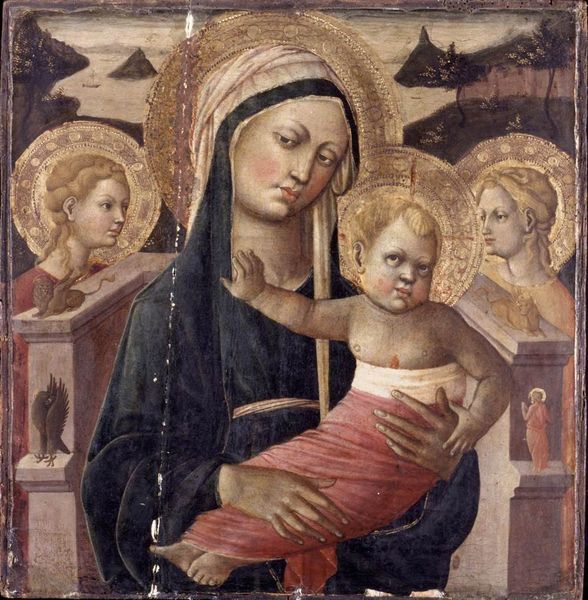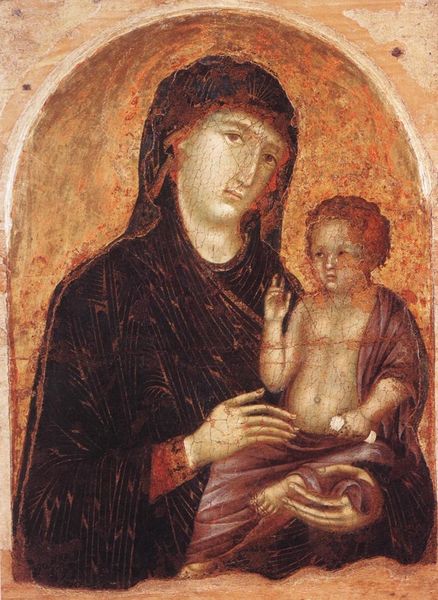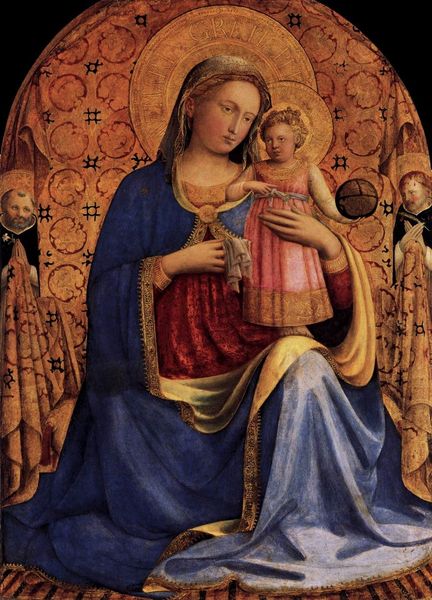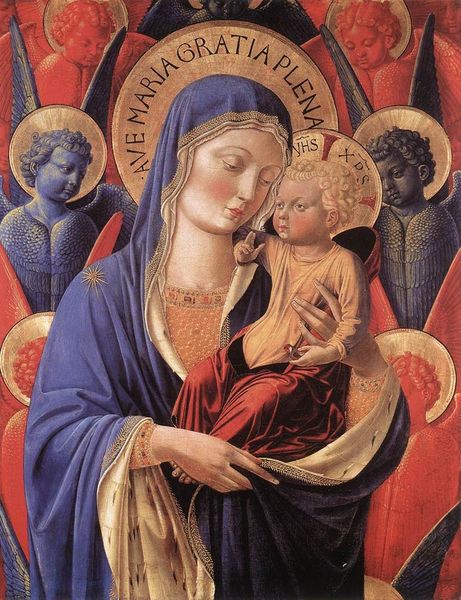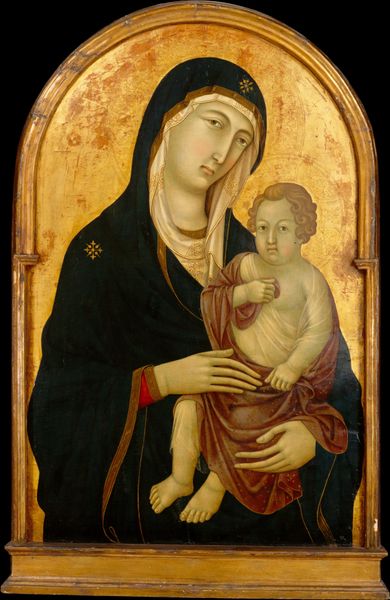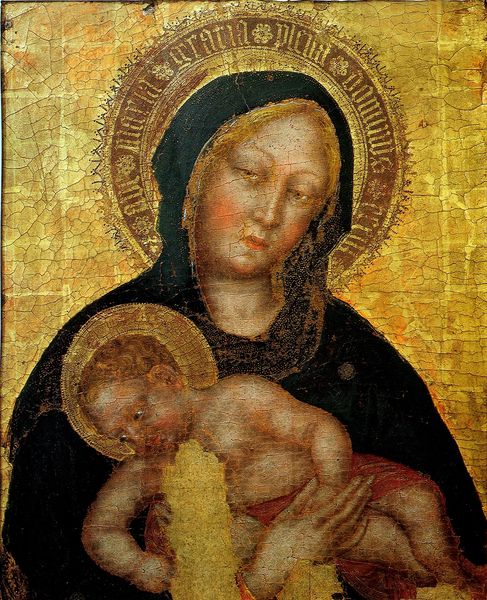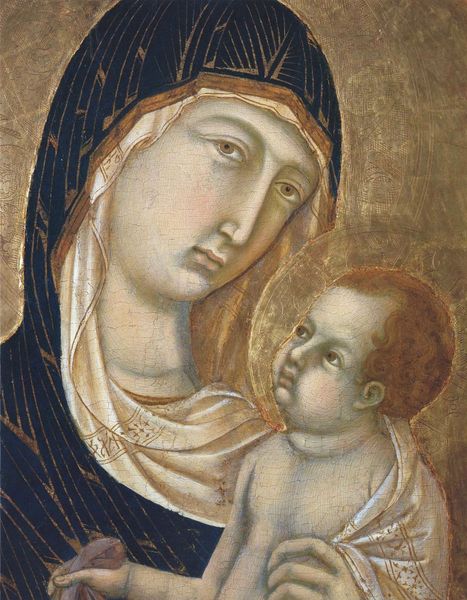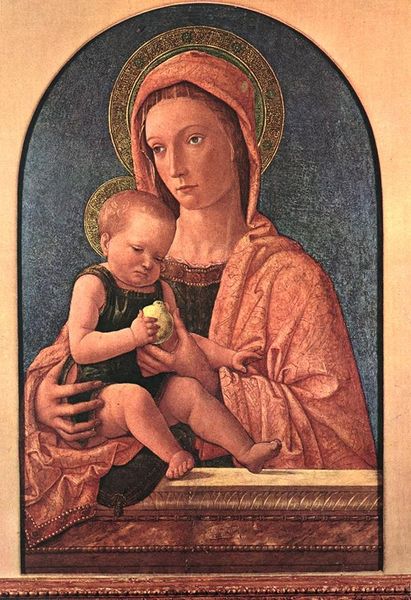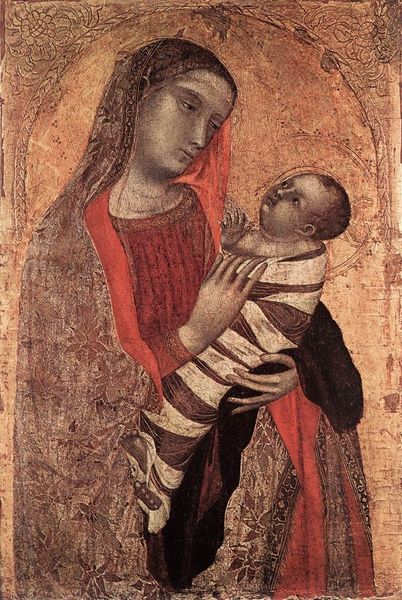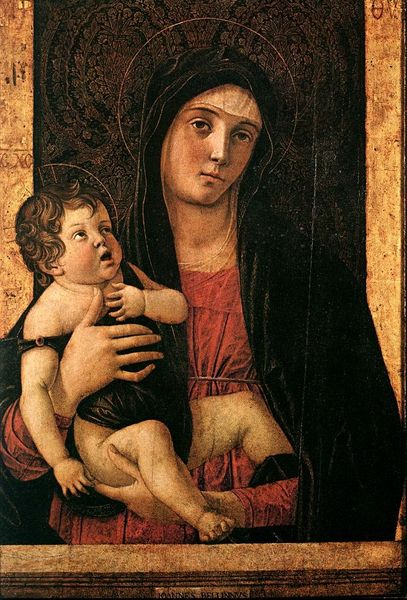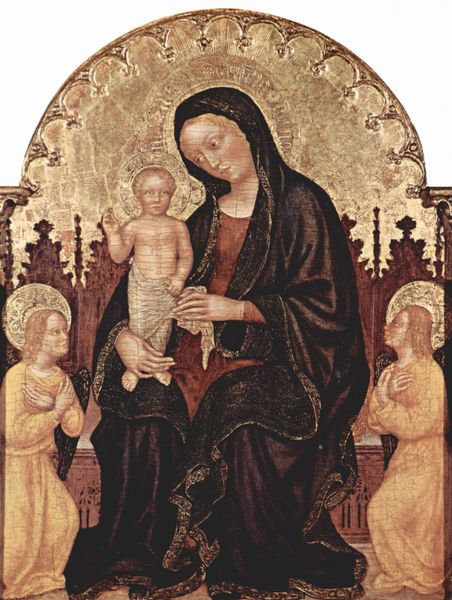
tempera, painting
#
portrait
#
gouache
#
tempera
#
painting
#
figuration
#
madonna
#
oil painting
#
child
#
coloured pencil
#
christianity
#
italian-renaissance
#
early-renaissance
#
virgin-mary
#
christ
Dimensions: 254 x 130 cm
Copyright: Public domain
Curator: This is Benozzo Gozzoli's "Madonna and Child Giving Blessings," a tempera on wood panel, dating back to 1449. It currently resides in Santa Maria sopra Minerva, in Rome. Editor: My initial reaction is a feeling of serenity. The soft colors and gentle expressions evoke a sense of peace and contemplative devotion. It's much more intimate than other more imposing works from that period. Curator: Absolutely, and I find myself wondering about Gozzoli's workshop. How many apprentices assisted in preparing the wood panel, grinding pigments for the tempera? And what was the commission that led to this intimate, domestic portrayal? The social network of art production at the time shaped everything, down to the colour choices based on the pigments available and their costs. Editor: Yes, that's an important element of this Early Renaissance work, understanding the economic context within which art functioned. It clearly had a place within the Church and religious instruction, yet one also feels Gozzoli injected his artistic style into familiar conventions, and so his individuality emerges within established parameters. The halo around the Madonna is labeled MARIA VIRGO. Why Latin in this specific context? Curator: Latin would reflect the social class it was created for: an educated and literate clergy would have appreciated that flourish. The ultramarine used in Mary's robe would have been costly to procure, impacting production, making it all the more valued. And thinking of audiences, consider its intended location: light, sightlines, did its function align more with display, devotion or instruction? Editor: The piece embodies a fascinating intersection of economics, the display of power and skill, but also something more. It strikes me as almost humane. I wonder how people responded at the time? Perhaps similarly to how it impacts me today with its tenderness. Curator: Precisely. Studying the raw materials informs a deep understanding of the art of the period: both for how it came to be, and what place it played in that moment in history. Editor: It is a glimpse, ultimately, into a shared history and cultural exchange that binds us across centuries. It reminds us how even within devotional imagery, personal expressions can blossom.
Comments
No comments
Be the first to comment and join the conversation on the ultimate creative platform.
